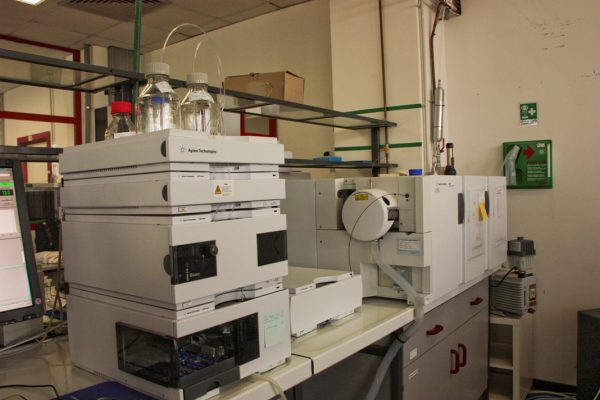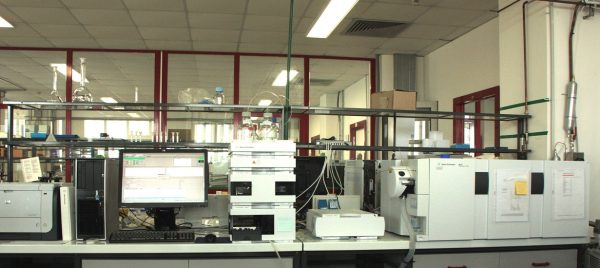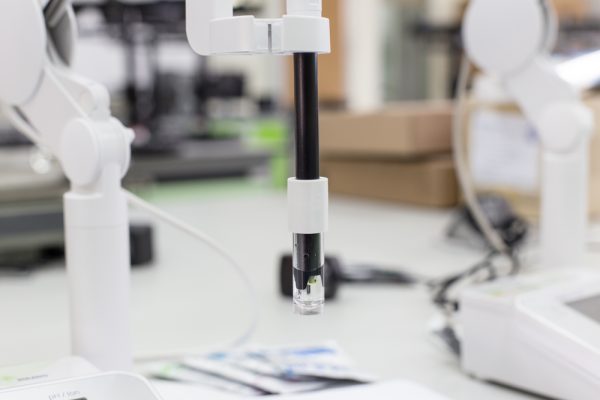Environmental fate
Chemical substances introduced in the environment, such as Plant Protection Products (PPPs), undergo many processes that spread them among the environmental compartments and modify their structure:
soil and leaves erosion from the wind, adsorption from soil particles and the uptake from plant roots, microbial and chemical degradation in the soil and in the water, volatilization from leaves and soil surface, leaching to groundwaters, run-off from soil surface, photodegradation.

It is necessary to address the fate of the substances in the different environmental compartments (soil, water and air), their availability to plants and animals and their potential for bioaccumulation in the organisms.
Data on fate and behaviour should allow an evaluation of the substance persistence in the environment and later they should be used to assess the risk to the non target organisms, the non target plants and the succeeding crops which will be exposed to PPPs, its active substance, metabolites, degradation and transformation products of the active substance.
The expert staff of BioTecnologie BT has the most advanced analytical equipment to run environmental fate tests: LC MS/MS, UPLC MS/MS, LC DAD UV-VIS/Fluorescence, ICP MS, GC MS, GC MS/MS, GC FID/µECD.
The studies are GLP compliant and the experimental designs reflect the most updated OECD testing guidelines.
Fate and behaviour in soil
OECD TG 307: Aerobic-Anaerobic Transformation in soil
Soil samples, with different characteristics, are treated with the test substance and incubated in the dark in biometer-type flasks under controlled laboratory conditions of temperature and soil moisture. After appropriate time intervals, soil samples are extracted and analysed in order to determine the parent substance and the (known) transformation products/metabolites contents. The test should normally ended 120 days after the test substance application, no longer, to ensure an adequate soil microbial activity expected in an artificial laboratory system. A plot of the test substance concentrations versus time allows an estimation of its transformation half-life/DT50. Major transformation products have to be identified and their concentrations versus time plotted to show their rates of formation and decline.

STUDY DESIGN
1 concentration of the the test substance is tested in different soil types.
Analytical determination of the parent substance and the transformation products content in soil:
2 replicates/sampling date for treated soil
1 replicate/sampling date for untreated soil
Additional replicates for microbial biomass determination:
2 replicates/sampling date for treated and for untreated soil
Additional replicates as spare samples
Recovery quality check at 2 fortification levels:
1 replicate for sampling date/fortification level for untreated soil
Repeatability of the analytical method:
Duplicate analysis of the same extract of soil at proper sampling dates
LOD (for the test substance and the transformation products): 0.01 mg/kg of soil or ≤ 1% of the initial amount applied to the soil and LOQ determination.
Analyses performed using a method validated according to SANCO/3029/99 rev.4 guidance document.
Where relevant, cartridges or traps to determine the active substance volatile fraction or volatile by-products are used.
ENDPOINTS
Kinetics analysis and calculation of DT50 and DT90 values.
Transformation products pattern.
Study includes GLP management and reporting.
REFERENCES AND GUIDELINES
OECD Guideline for Testing of Chemicals, No. 307 (24th April 2002) – Aerobic and anaerobic transformation in soil.
SANCO/3029/99 rev.4 (11/07/2000) – Residues: guidance for generating and reporting methods of analysis in support of pre-registration data requirements for Annex II (Part A, section 4) and Annex III (Part A, section 5) of Directive 91/414.
Fate and behaviour in water and sediments
OECD TG 308: Aerobic-Anaerobic Transformation in aquatic sediment systems
Aerobic/anaerobic sediment systems, coming from different sources, are assembled in a biometer or a gas flow-through apparatus, incubated in the dark under controlled conditions of temperature. For aerobic studies 2 sediments are normally used differing in organic carbon content and texture.
The aerobic test simulates an aerobic water column over an aerobic sediment layer that is underlain with an anaerobic gradient. For the anerobic studies 2 sediments are sampled along with their waters. The anaerobic test simulates a complitely anaerobic water-sediment system.
The test substance is generally applied as aqueous solution on water phase.
After appropriate time intervals, the vessels containing the water-sediment systems are removed.
Sediment and its overlying water are extracted and analysed separately in order to determine the parent substance and the (known) transformation products/metabolites contents in the 2 phases. The test should normally ended 100 days after the test substance application. A plot of the test substance concentrations versus time allows an estimation of its transformation half-life/DT50. Major transformation products have to be identified and their concentrations versus time plotted to show their rates of formation and decline.

STUDY DESIGN
1 concentration of the the test substance is tested in different sediment types
Analytical determination of the parent substance and the transformation products content in sediment and water:
4 replicates (2 replicates for sediment + 2 replicates for water phase)/sampling date for treated system
2 replicates (1 replicate for sediment + 1 replicate for water phase)/sampling date for untreated system
Additional replicates for relevant determinations on the 2 phases:
4 replicates (2 replicates for sediment + 2 replicates for water phase)/sampling date for treated and for untreated system
Additional replicates as spare samples.
Recovery quality check at 2 fortification levels:
2 replicates (1 replicate for sediment + 1 replicate for water phase)/sampling date for fortification level for untreated system.
Repeatability of the anlytical method:
Duplicate analysis of the same extract of water/sediment at proper sampling dates.
LOD (for the test substance and the transformation products) ≤ 0.01 mg/L (water) or 0.01 mg/kg (sediment) or ≤ 1% of the initial amount applied to the test system and LOQ determination.
Analyses performed using a method validated according to SANCO/3029/99 rev. 4 guidance document.
Where relevant, cartridges or traps to determine the active substance volatile fraction or volatile by-products are used.
ENDPOINTS
Kinetics analysis and calculation of DT50 and DT90 values.
Transformation products pattern.
Study includes GLP management and reporting.
REFERENCES AND GUIDELINES
OECD Guideline for Testing of Chemicals, No. 308 (24th April 2002) – Aerobic and anaerobic transformation in aquatic sediment systems.
SANCO/3029/99 rev. 4 (11/07/2000) – Residues: guidance for generating and reporting methods of analysis in support of pre-registration data requirements for Annex II (Part A, section 4) and Annex III (Part A, section 5) of Directive 91/414.
OECD TG 111: Hydrolysis as a function of pH
Sterile aqueous buffer solutions of different pH values (pH = 4, 7 and 9) are treated with the test substance and incubated in the dark under controlled laboratory conditions of temperature. After appropriate time intervals, buffer solutions are analysed for the test substance content and (if required) for hydrolysis products. The test should normally runs until 90% hydrolysis of the test substance is observed or for 30 days whichever comes first. A plot of the test substance concentrations versus time allows an estimation of its hydrolysis half-life/DT50. Major hydrolysis products can be identified and their concentrations versus time plotted to show their rates of formation and decline. Sterility checks are usually planned at the start and at the end of the study in order to ensure that all test phases are carried out in abiotic conditions.
Preliminary test-Tier 1 (if required) is performed at 50 ± 0.5°C and pH 4.0, 7.0 and 9.0. If after 5 days hydrolysis < 10%, the test substance is considered hydrolytically stable and, normally, no additional testing is required.

STUDY DESIGN
1 concentration of the the test substance at different pH and temperature conditions.
Analytical determination of the parent substance and major hydrolysis products content in sterile buffer samples:
Treated sample: 2 replicates for sampling date for each pH/temperature condition
Untreated sample: 1 replicate for each pH/temperature condition at first and last sampling planned
Additional replicates for sterility check:
Untreated sample: 1 replicate for each pH/temperature condition at first and last sampling planned
Additional replicates as spare samples.
Recovery quality check at 2 fortification levels:
1 replicate for sampling for untreated buffer solution
Repeatability of the anlytical method:
Duplicate analysis of the same extract of buffer solution at proper sampling dates.
LOD (for the test substance and the transformation products):
≤ 3% of the initial amount applied to the solutions.
LOQ ≤10% of the initial amount.
Analyses performed using a method validated according to SANCO/3029/99 rev.4 guidance document
ENDPOINTS
Kinetics analysis and calculation of DT50 and DT90 values.
Major hydrolysis identification/quantification (if required).
Study includes GLP management and reporting.
REFERENCES AND GUIDELINES
OECD Guideline for Testing of Chemicals, No. 111 (13thApril 2004) – Hydrolysis as a function of pH.
SANCO/3029/99 rev. 4 (11/07/2000) – Residues: guidance for generating and reporting methods of analysis in support of pre-registration data requirements for Annex II (Part A, section 4) and Annex III (Part A, section 5) of Directive 91/414.
Study finder
Scientific Contact
Anna Paola Fifi
E-mail: apfifi@biotecnologiebt.it
Phone: +39 075 895 0045 – Ext. 245
Stefano Paronuzzi
E-mail: sparonuzzi@biotecnologiebt.it
Phone: +39 0371 4662700
Business Contact
Katy Lazzari
E-mail: klazzari@biotecnologiebt.it
Phone: +39 075 895 0045 – Ext. 246
Discover the other Expertise
Didn’t find what you are looking for? Send us a message!
Fill in the form with the required information (*).
Our team will be happy to provide all the necessary support with regard to your request.


 English
English Italian
Italian